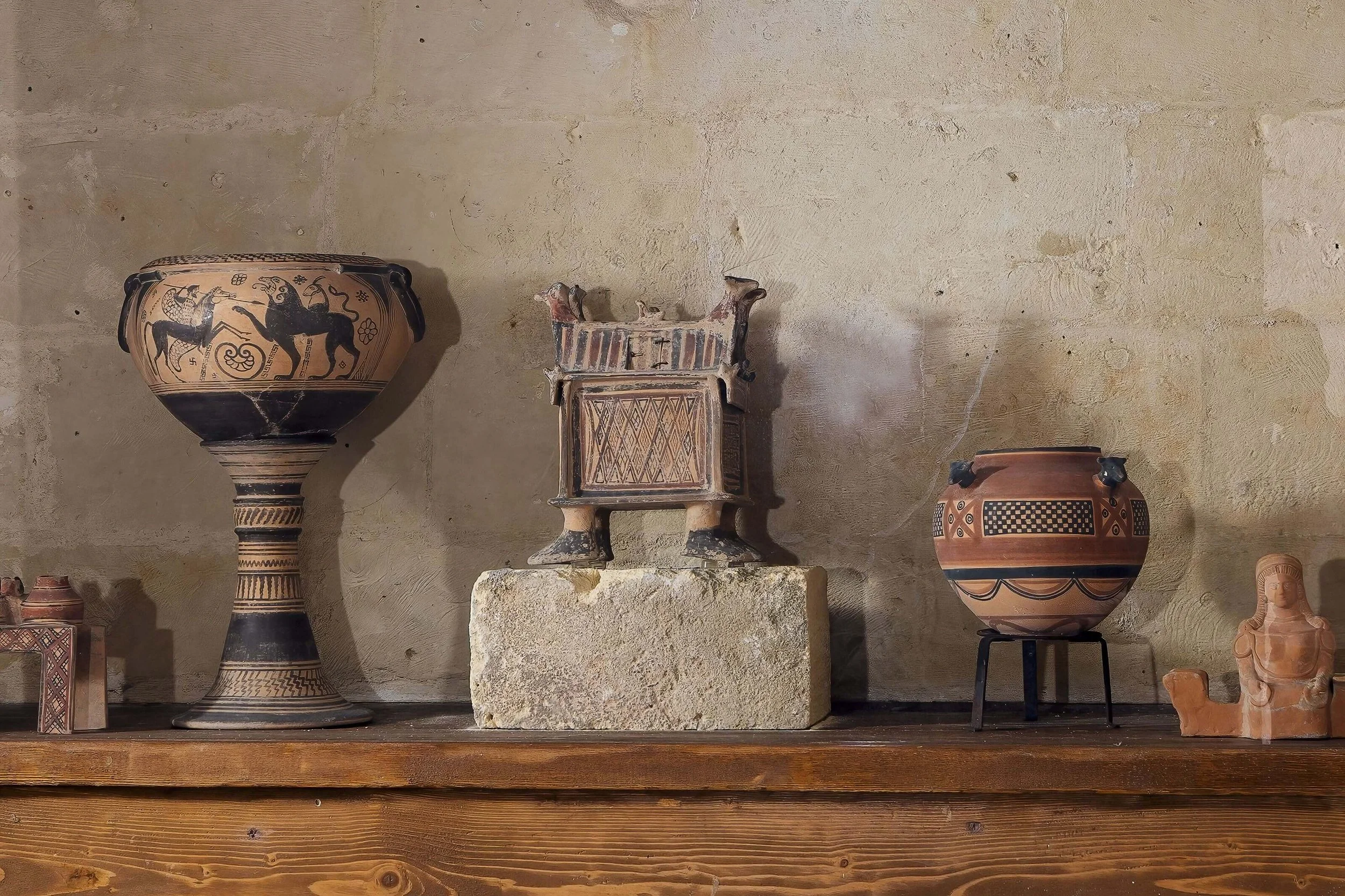The Moyseion brings the Greek heritage of ancient Southern Italy to life through spaces, rites and sensory experiences that reawaken the classical world
In the city of Matera in Southern Italy, where the cave dwellings of the Sassi form one of the oldest urban landscapes in Europe, a new project invites visitors to step into a reconstructed past. The Moyseion is not simply an unusual hotel or a thematic museum. It is a carefully orchestrated environment that revives the daily life and cultural atmosphere of Magna Graecia with the precision of archaeological reenactment and the intimacy of lived experience.
The complex extends across nearly one thousand square meters within restored underground dwellings. These ancient spaces, once abandoned, have been brought back to life through the collaboration of archaeologists, historians, architects and artisans. Sixteen houses from different periods have been reconstructed, ranging from the Neolithic era to the centuries of Greek presence. Every object, weaving, vessel and piece of furniture has been crafted from archaeological evidence and experimental techniques. Modern necessities such as lighting, plumbing and climate control remain concealed so that nothing disrupts the ambience.
At the core of the Moyseion lies the Sanctuary of Waters, a stone-carved spa that evokes ancient cult sites dedicated to Demeter and the cleansing symbolism of water. Pools and basins cut directly into the rock are illuminated in a way that recalls surviving references from Magna Graecia, while scents and soundscapes remove the visitor from the rhythm of contemporary life.
The project becomes fully alive through the people who inhabit it. A dedicated group of young specialists has been trained in ancient music, dance, ritual performance and the choreography of symposia. Guests are invited not only to watch but to participate. They wear clothing inspired by archaeological finds, take part in ceremonies of welcome or morning meals and experience scenes from daily life reconstructed from literary and material sources.
The culinary dimension of the Moyseion relies on collaboration with food historians and anthropologists. Breakfast includes dishes grounded in ancient Greek diet and technique, from barley bread and fig cakes to spreads made from wild herbs. Workshops on ancient music complement these experiences, including lyre programs created with the Lotos Lab of Cambridge.
Matera itself, with nearly nine thousand years of continuous habitation, serves as the ideal backdrop. The Sassi, once described as Italy’s disgrace due to the harsh living conditions of the mid twentieth century, have since been revived and now host both major film productions and cultural initiatives like this one.
Antonio Panetta, the founder of the Moyseion, describes its purpose with clarity. Visitors no longer want to view history through a barrier of glass. They want to feel that the ancient world still breathes around them, that its echoes survive in the senses. The Moyseion seeks to awaken that dormant layer of human memory, offering a moment in which the past is not observed but inhabited.
A place like this may change you, even slightly. And if it does not, it will at least allow you to experience how antiquity can move beyond the static museum case and become a living presence once again.


























